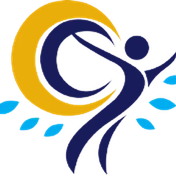 One of the common notions of physical therapy we’ve come across as a provider of therapy services(opens in a new tab) is of it being a treatment option, as in, an alternative to the traditional, more accepted methods of treatment and not a standalone option. But physical therapy, and the other forms of it such as occupational therapy(opens in a new tab) can be as much a standalone treatment as it is a support treatment. In fact, it can help with all phases of treatment—from the initial diagnosis to the actual recovery and restoration period down to preventive education. This is important because getting physical therapy is usually either through a doctor's recommendation or by the patient's own will and not being aware of this can delay the start of treatment. For instance, you may need speech therapy services(opens in a new tab) and not receive it immediately, potentially causing your symptoms to worsen. Physical therapy can be difficult and uncomfortable because you will have to use parts of your body that are injured or painful. Rest assured, however, that licensed professionals such as our physical therapists at Outcomes Therapy OPS have been trained to evaluate and treat abnormal physical functions related to a sports injury, accidents, and mobility issues, among others. In line with this, here are some of what you can expect from the treatment:
One of the common notions of physical therapy we’ve come across as a provider of therapy services(opens in a new tab) is of it being a treatment option, as in, an alternative to the traditional, more accepted methods of treatment and not a standalone option. But physical therapy, and the other forms of it such as occupational therapy(opens in a new tab) can be as much a standalone treatment as it is a support treatment. In fact, it can help with all phases of treatment—from the initial diagnosis to the actual recovery and restoration period down to preventive education. This is important because getting physical therapy is usually either through a doctor's recommendation or by the patient's own will and not being aware of this can delay the start of treatment. For instance, you may need speech therapy services(opens in a new tab) and not receive it immediately, potentially causing your symptoms to worsen. Physical therapy can be difficult and uncomfortable because you will have to use parts of your body that are injured or painful. Rest assured, however, that licensed professionals such as our physical therapists at Outcomes Therapy OPS have been trained to evaluate and treat abnormal physical functions related to a sports injury, accidents, and mobility issues, among others. In line with this, here are some of what you can expect from the treatment:
- Physical exam and evaluation that begins with a health history check and comprehensive physical evaluation that assesses your posture(opens in a new tab), muscle and joint motion, and flexibility, among others.
- Clinical diagnosis and prognosis and an equivalent care plan
- The actual physical therapy treatment and intervention
- Self-management recommendations based on the care plan and the established short- and long-term goals
<br />{<br />'@context': 'https://schema.org',<br />'@type': 'NewsArticle',<br />'mainEntityOfPage': {<br />'@type': 'WebPage',<br />'@id': 'https://www.outcomeshometherapy.com/physical-therapy-101-what-to-expect'<br />},<br />'headline': 'Physical Therapy 101: What to Expect',<br />'image': [<br />'https://www.outcomeshometherapy.com/wp-content/uploads/2020/08/physical-therapy-101-what-to-expect.jpg',<br />'https://www.outcomeshometherapy.com/wp-content/uploads/2020/08/physical-therapy-101-what-to-expect-300x200.jpg',<br />'https://www.outcomeshometherapy.com/wp-content/uploads/2020/08/physical-therapy-101-what-to-expect-150x150.jpg'<br />],<br />'datePublished': '2020-08-12',<br />'dateModified': '2020-08-12',<br />'author': {<br />'@type': 'Person',<br />'name': 'Louise Savoie'<br />},<br />'publisher': {<br />'@type': 'Organization',<br />'name': 'Outcomes Therapy OPS',<br />'logo': {<br />'@type': 'ImageObject',<br />'url': 'https://www.outcomeshometherapy.com/wp-content/themes/outcomestherapy/images/WEBP/main-logo.webp'<br />}<br />},<br />'description': 'But physical therapy, and other forms of it such as occupational therapy can be as much a standalone treatment as it is a support treatment.'<br />}<br />

